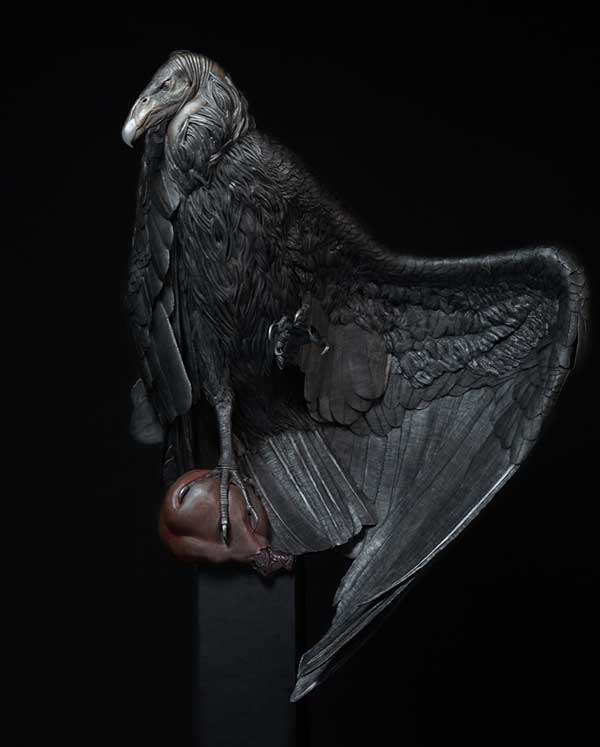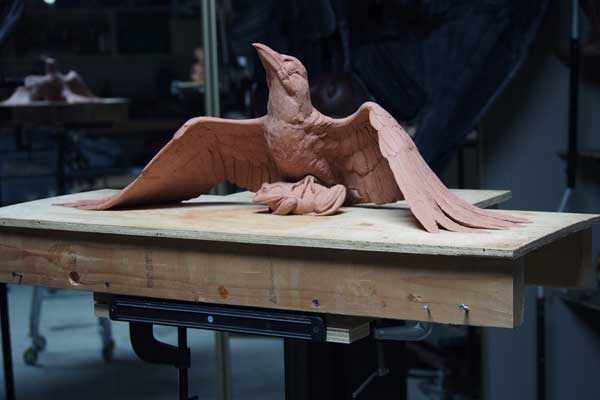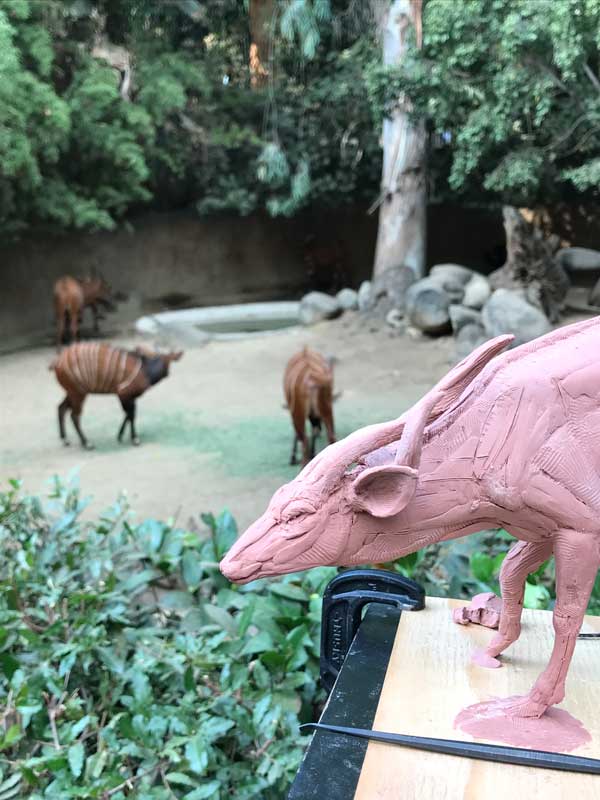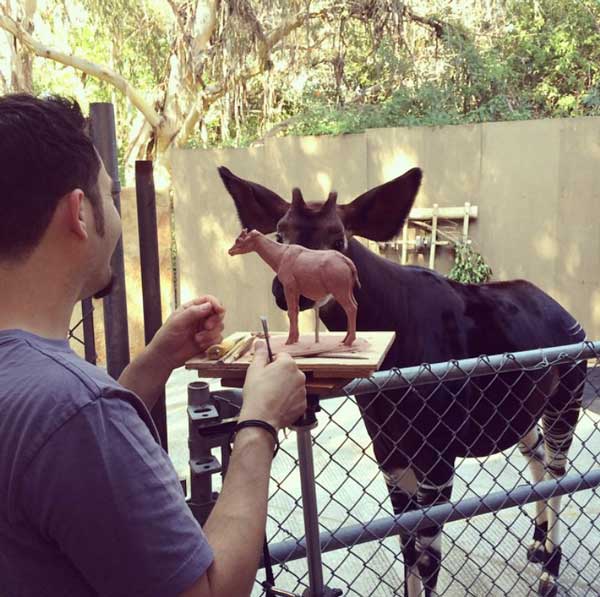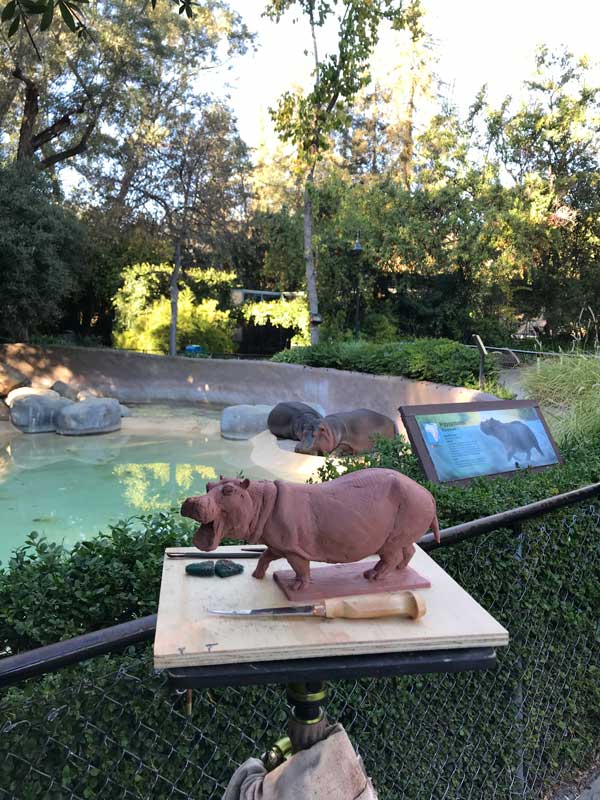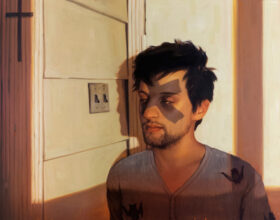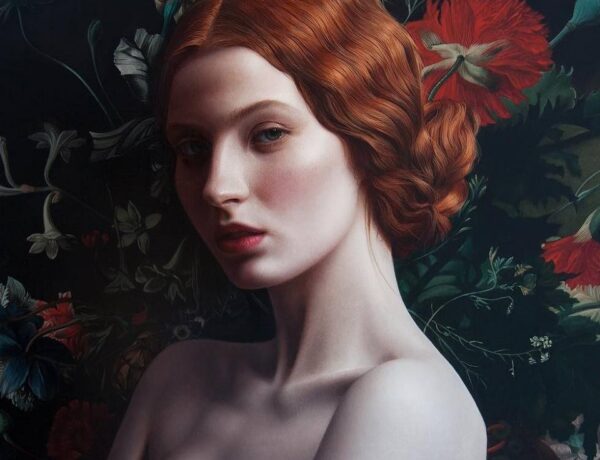Exclusive Interview with Adam Matano, 3rd Prize Winner Sculpture Award, 2019 Beautiful Bizarre Art Prize
Adam Matano has chosen to work with bronze to give his artworks some durability. This American sculptor is focusing on animals, and inevitably, is aware of their risk of extinction. In a way, he’s doing conservation, just like the zoos and natural reserves he visits for inspiration.
In these, he meets animals we saved and human beings who save them. But if you read his interview, and if you have a little empathy for animals, you will become aware of something that you perhaps could also understand while admiring Adam Matano’s sculptures.
To enter the 2020 Beautiful Bizarre Art Prize in any of the four Award categories: INPRNT Traditional Art Award, Yasha Young Projects Sculpture Award, ZBrush Digital Art Award or iCanvas Photography Award, and for your chance to receive global exposure for your work + share in over US$35,000 in cash and prizes, click here.
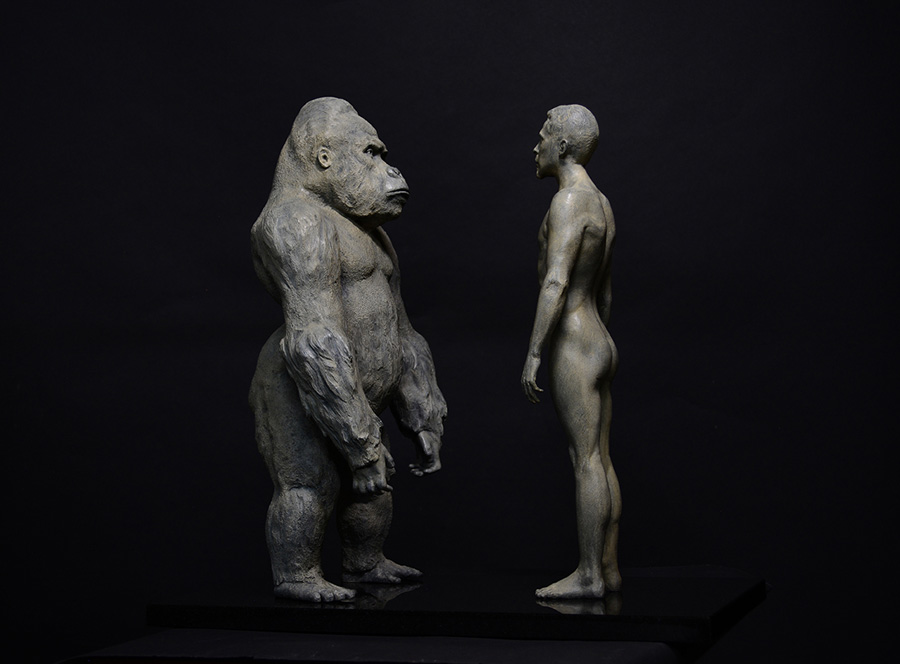
Of course, we can help animals thanks to the technological inventivity of mankind. But we would be fools not to realize that animals can help us too, with their own special skills. The company of an animal can brighten our state of mind and even give us the strength to recover from a mental or physical wound. An encounter with a wild animal can have spiritual virtues and lead us to reconsider our link to nature and life.
They are reminding us of the fatality of our mortal condition and thus of its intrinsic beauty. The civilizations and individuals that fascinates us the most with their nearly magic cultures and artworks are those who have dedicated themselves to the admiration of nature and cultivated their link with it. If contemporary art often focuses on humanity to brainstorm the sense of our existence and the parameters of our future, artworks centered on animals can do even more.
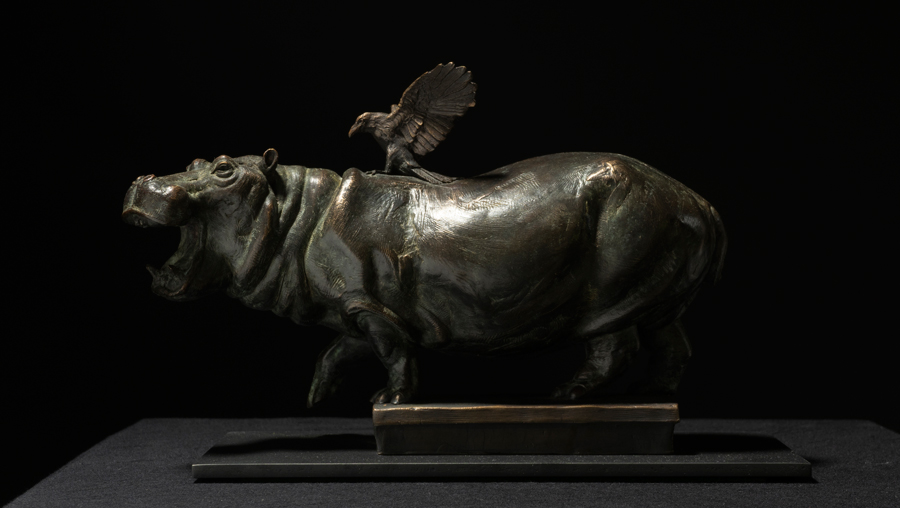
First, they can allow us a pause in time to get a wider look at our place in the universe. If nature has become a danger for us through natural disasters, it is because we were the original danger, the prime disaster that plagued nature. We were given an amazing gift, the one of enjoying nature’s grandeur and to document it. Now that our selfish actions are turning against us, we need to seek other animals for help.
Because, yes, we are animals too. Intelligent and creative, sure, but in front of the chaos we provoked, we can only display fear and hate toward our own kind. Scientists have observed that animals, in the contrary, are changing their habits to create peaceful relationships between species to survive.
So yes, we need to clean up our acts and save them. But let’s also learn from them to save the very idea of a future together. Don’t know where to start ? You can maybe take some time to read this inspiring interview of Adam Matano.

What is your artistic background? Why did you decide to become a sculptor?
I was always curious about sculpture as a kid. However, I come from a very small town, and there was never an opportunity for it, so I spent a lot of time drawing. My real artistic passion growing up was music. I started playing the trombone at 11 and switched to the drums a few years later. That was my life for the next 8 years, I thought I was going to be a metal drummer.
I didn’t find sculpture until I was 25, and sculpture was a perfect fit. Sculpture actually turned out to be a better way for me to communicate my ideas about animals and nature, plus I enjoy having full control of the whole process.
Is bronze your favorite material, and if yes, what makes it different from the others? How do you enjoy using it?
I would say yes, bronze is my favorite material. I do appreciate the history of bronze that goes back at least 2-3000 years. It’s fascinating to learn how it was made then, and the advancements and changes we’ve made to the process over the years. But mostly there is an interesting metamorphosis that happens when making a bronze sculpture.
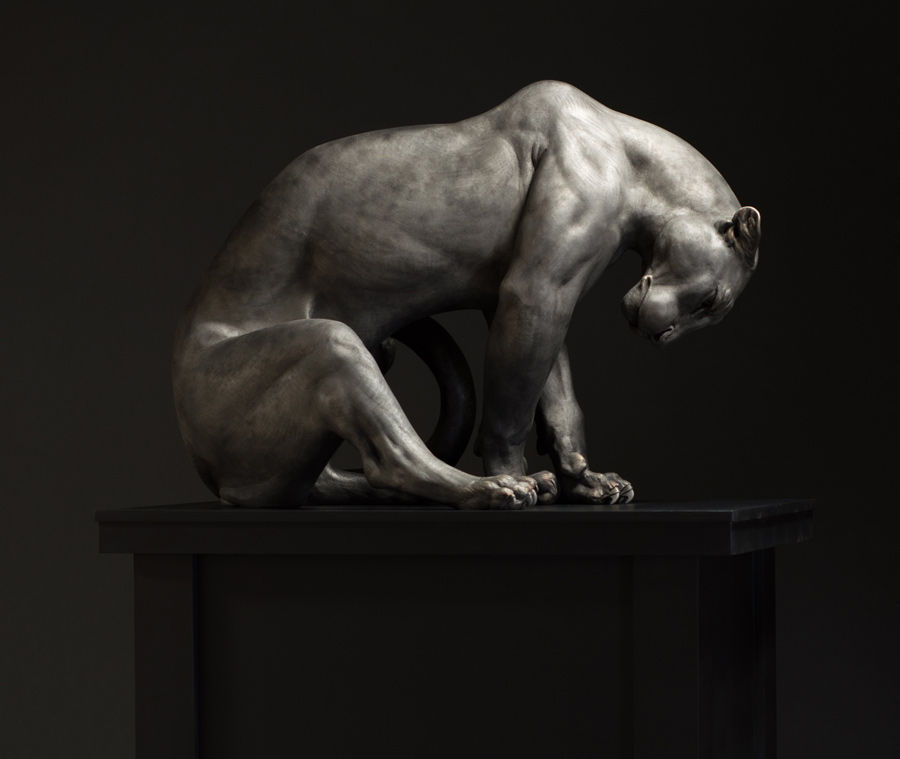
The clay sculpture starts out as a positive, then when molded it becomes a negative, wax is then poured into the mold and it becomes a positive again, then wax is molded again, back into a negative (the investment mold) and then finally, the wax is melted out of the investment mold, (back into a negative), then the bronze is poured in to make the final positive bronze sculpture.
It is a very poetic journey in itself. Seeing the sculpture in different mediums sometimes can change your ideas of the piece. I enjoy that. There are also functional reasons why I use bronze as a medium. A lot of my work is off balance or on skinny legs and the bronze ensures a strong, long lasting cast, that will last another 1,000 years, if we do.
How do you proceed when you create an artwork? Do you sketch a study of your subject? How long does it take to finish a project?
I have a few different approaches to starting my artworks. Mainly, I like to start abstractly, sometimes with small, very loose, maquette sculptures or with sketches in my sketchbook. It’s important for me to keep it loose at the beginning stage, not to get distracted with anatomy and/or precise proportions. The main focus is the shape, rhythm and design.
I can always fit the animal into the shape and tighten it up later. After I have a good idea about the attitude and design of the sculpt, I will find the perfect model for the piece physically and psychologically. I will then do some naturalistic studies of my model. These studies are meant to capture my observations of their proportions, anatomical anomalies, attitudes, textures, etc, that can be used back at the studio.
I am constantly working from life and in my studio separately, with and without the model. The studio time gives me a chance to really look at the sculpture on its own, as its own being. It allows me to pull from my imagination, and figure out what it is I’m trying to do with the sculpture. I work on several at a time, because for me, the work and ideas need time to percolate and evolve.
Having fresh energy and eyes on a piece can clarify what is working and what isn’t, and a lot of times what I learn on one will help to inform another. My big sculptures, like Rascal, take about 6- 7 months of on and off work.
What is your story with the animal kingdom? Are animals more interesting models than humans for anatomical, challenging or ecological reasons?
I don’t think of animals as different of us actually. I grew up in the woods and spent a lot of time with animals, wild and domestic. I have always seen the qualities in them that most people think are unique to humans. You just have to go about looking at them in a different way. Some animals interact with the world in different ways, such as Lemurs who communicate more with smells than facial expressions.
The best way to understand them is to educate yourself about the species, how they live, and the environment they come from, and to spend a lot of time with them and carefully observe. Notice how they see the world around them. How do they react to situations, noises, etc? When I am at the zoo or a farm, I will spend the whole day with them- you really can’t rush this part.
Sculpturally, when working with animals it is a lot of fun playing with so many different shapes and textures. Every species and every individual has something unique to show you, which can add so much to your ideas. Just like when I work with human animals, it matters who the individual is to some degree. I do think animals need more representation when talking about big global issues. I try to focus on the individual to represent the being inside that is just like us.
I don’t see animals as an archetype of a species just like I don’t do that with the race of humans. There is no doubt we are a special kind of animal, but we are still an animal. There are just some communication barriers we need to break through and art can be a great vessel for that.
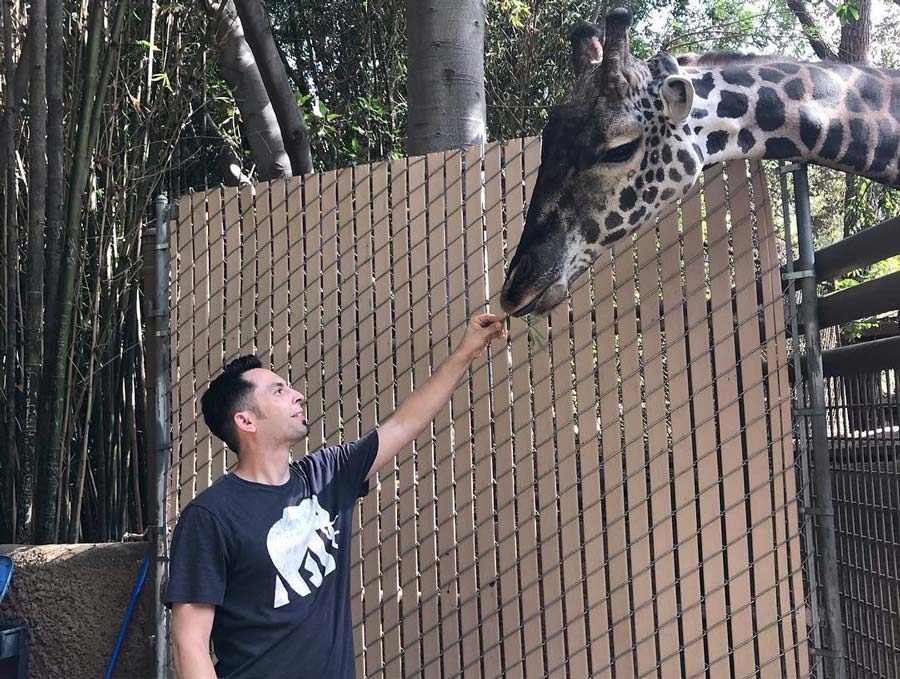
As an animal artist, do you feel more concerned by endangered species and climate change? Do they influence your choice when deciding to sculpt an animal, for example to raise awarenessor keep their memory alive?
I do feel very concerned about endangered species and climate change, but not just as an animal artist, as a living being that requires a healthy planet to survive! This issue is important for everyone. But yes, as an animal lover, it is always on my mind and it’s heartbreaking. There are little things we can do right away, such as using fewer plastics and chemicals, recycling and eating less meat.
I personally am vegan, and I try to keep my footprint as small as I can, but I understand it is hard to live in this world today without making an impact, so I don’t judge people. Honestly, I believe even if everyone did just a little each day it would make a huge difference. I try to stay optimistic, because change does happen and we are seeing signs of change.
Unfortunately, humans seem to have a bad habit of waiting until things are too big to ignore before acting. I really hope we can outgrow that.
I do love the work of Joel Sartore. He is a beautiful photographer, who really captures the personalities of the individuals he is photographing. His Photo Arch project is trying to photograph as many species as possible before they go extinct. It’s beautiful and sad at the same time. There is an element of that in my work as well.
I do care about the individual and about global issues, but I am not trying to hit people in the face with it. I don’t think it’s about blame or making people feel bad.
We are all born into this to some degree and there are many biological reasons for our actions that we are not aware of. So, it’s complicated, let’s just focus on where we are now and what we can do to improve.
Aside from this, I also have many more conceptual and ambiguous ideas going on in my sculptures. My work is designed to be interpretive. I have my own ideas of what is going on, but that is not the only experience to have. I encourage people to bring their own ideas into it. Our individual experiences are unique and valid and can bring some interesting perspectives to the interpretations that are unpredictable. Art can be a way to get people to see something they’ve seen many times for the first time.

Your winning piece Rascal is based on a condor from the Los Angeles zoo: can you tell us more about Dolly, your model, and on what you have learned from condors by sculpting one?
I was sculpting another animal when the condor team drove by and told me I had to meet their birds. They sent me a picture of Dolly and I had to meet her. The condors are not on display at the LA Zoo because most of them are wild birds that are being rehabilitated and re-released. Condors are another species that would be extinct already if it weren’t for zoos and other wildlife organizations. [*Los Angeles Zoo, San Diego Zoo, US Fish and Wildlife Services, Peregrine Fund, Portland Zoo OR, Ventana Big Sur release, Grand Canyon release, Pinnicles Nat Park, Baja Mexico Norte release- San Diego Safari Park and Mexican government.]
There were 22 individuals left in the wild in the 1980’s. So they took them in and started breeding them, which took a lot of trial and error. Now there are over 300 in the wild! It’s a great success story, however, sadly they are still under threat. Many condors are still being poisoned with lead. Hunters and farmers use lead bullets and the lead poisons the meat and the buckshot is sometimes consumed. The lead paralyzes the muscles that pumps food into their stomach from the crop pouch. They keep eating but it can’t go anywhere and they will starve without help. The birds can be cured, but only if people can get to them in time.
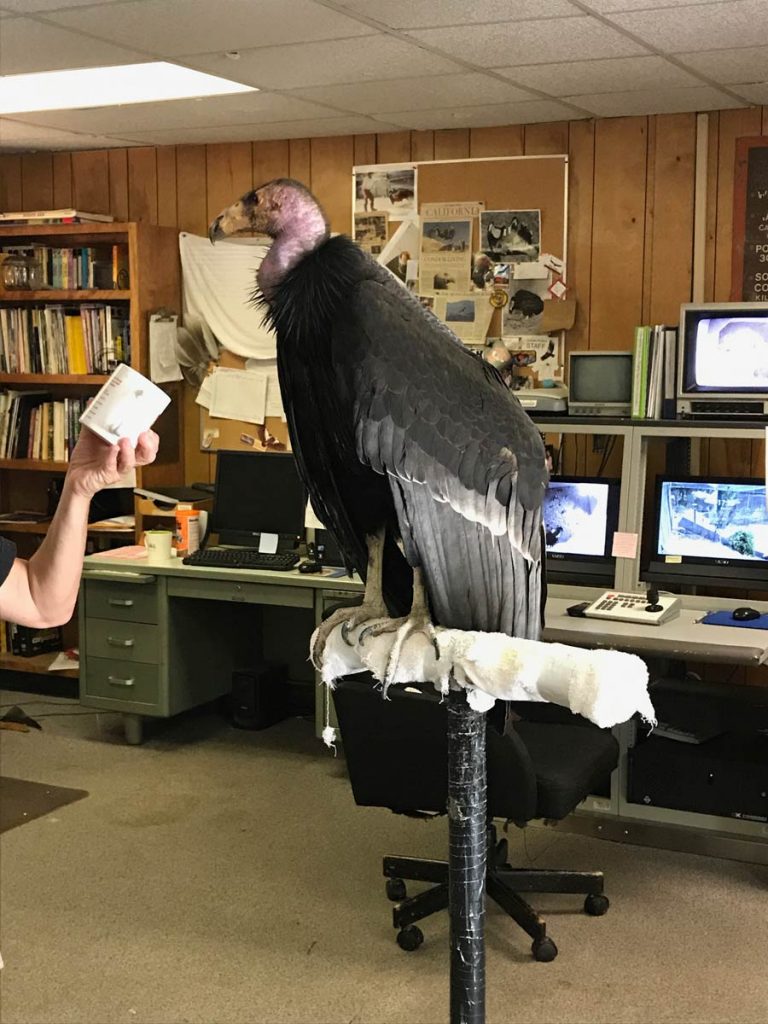
It was amazing meeting the condor team and all the wild condors at the Los Angeles Zoo. I got to know Mike, Debbie and Chandra, who were wonderful and had amazing stories. They were incredibly knowledgeable and loved to share their 15 plus years of experience about bird anatomy and function, and also psychology. They showed me the physical characteristics to look for to determine their mood and what they are thinking as well as explained and showed me how their social hierarchies worked, like who the boss of the group was, who always ate first, and how condors are also incredibly social and affectionate at times.
Dolly was a special case. She broke her wing before she could fly. There were many surgeries to try and fix her wing, but it broke too high on her humerus and all the surgeries were just getting too painful. To make matters worse, because condors are so social, without a social group maturing can be an issue. Without a social hierarchy you don’t know where you stand or how to behave, but that’s where the amazing condor team came in.
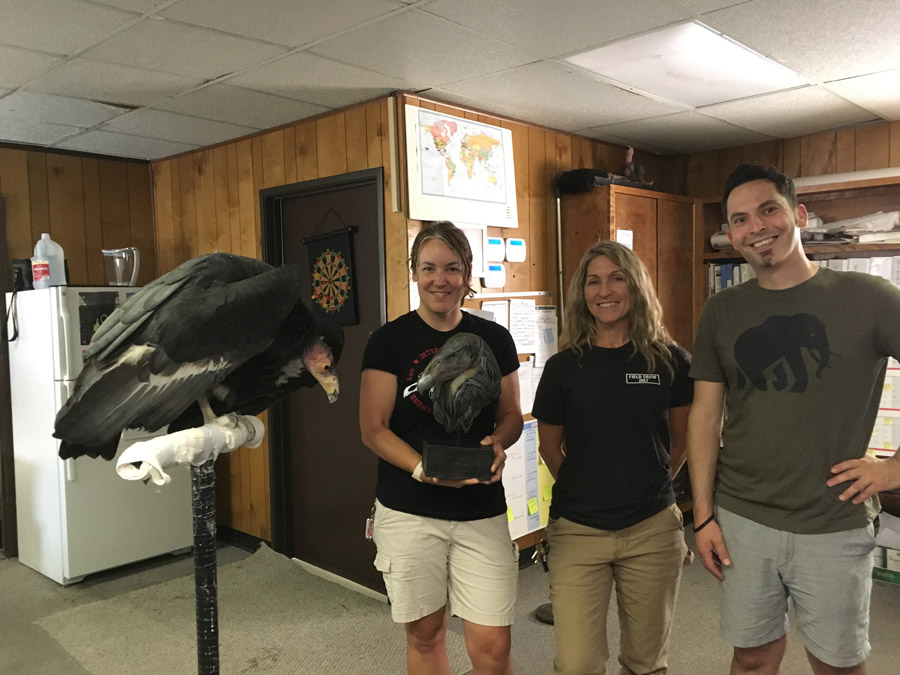
They made a perch for her in their office and she comes out most days and hangs with the team. She is very picky with who she trusts and it can change. Being with the team gave her a social group, or status, and she is very proud and has been doing very well since. She is even getting all the adult colors in her face now. She is still a bit audacious at times, hence the title, but she also has a very sweet and tender side and loves to be petted and to play.
So, of course, I was infatuated. She was the one I wanted. I felt like the condor team wanted me to sculpt a big majestic healthy wild one, and I probably will one day, but Dolly was so interesting and relatable.
We’ve all been broken to some degree and sometimes taken in from not our kind.
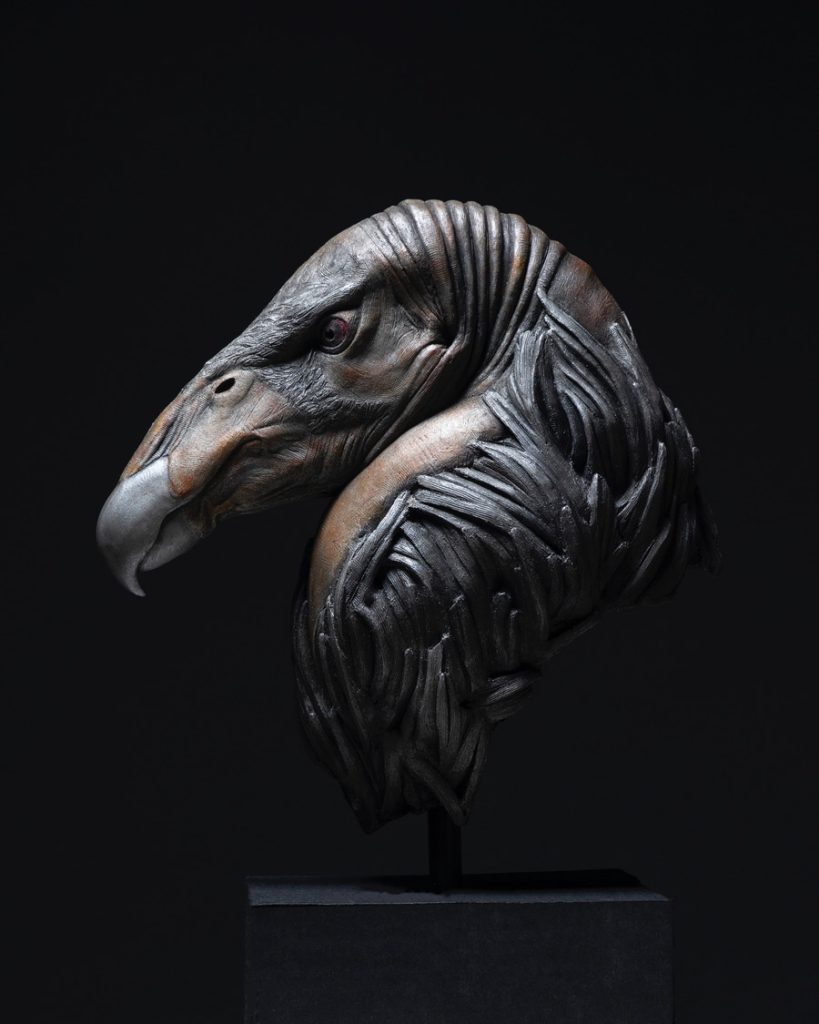
Condors, vultures, hyenas are not some of the most popular animals out there, but you have sculpted them: can you explain why and what it taught to you?
It is interesting; that is what I hear a lot from my friends at the zoo, “Why do you always pick the obscure animals that are not very popular?’’ It’s not really a conscious choice for me at first who I will work with; it’s more of a feeling I get and I know that’s the subject I want to work with. But in hindsight, it might be that I want to change these outdated biased opinions. People sometimes just accept these ideas and don’t see what’s in front of them. It’s like looking through a filter of constructed ideas. I also hear a lot, “I always thought condors were so ugly but you made them look so beautiful”.
Condors are actually pretty clean birds and if you spend some time with them, you see how incredibly social and smart they are. We are probably repulsed by the fact that they clean up the dead animals and it reminds us that we are animals and that will be us someday. We can try to leave nature, but that doesn’t change that we are still a part of it. So, the fact is, if it wasn’t for vultures and other scavengers cleaning up all the dead bodies, we would be littered with disease. Everything has a connection to the cycle, even if we don’t see it, or don’t want to see it.

Do you usually base your artworks on zoo animals? Or sometimes, wild ones? Any inspiring philosophy to share on these experiences?
I am not specifically sculpting zoo animals only, but it’s a great way to get to know individuals. If you can get to know the personality of your model and if they are a good fit psychologically, it can add a lot to the sculpture, just like with human models or actors in a movie. I am not solely representing them or my idea of them; it’s a kind of middle ground, combining elements of them with my original idea of the character.
I am ok with accredited zoos for many reasons; most importantly, many of the animals I sculpt would be extinct already if it weren’t for zoos breeding them and giving them a home because their natural habitat is being destroyed, repurposed, and the animals are hunted for food or luxury; such as ivory, rhino horn, etc.
The educational aspect of zoos is also very important. I believe it has to be done face to face, not through screens; we are too desensitized to screens. Understanding each animal’s particular care and giving them enrichment challenges while in captivity has also improved a great deal. Finally, many zoos do a lot for conservation, not just for the animals and land, but for the people living near these areas. If the people can’t live well, then they need to turn to the animals and land to survive.

There is another aspect of captive animals I am fascinated with: it’s the behavioral changes that can occur with animals in sanctuaries, zoos, farms, etc. Especially prey animals that spend their whole life in the wild worried about being hunted and finding food, -when you provide their food and take away the threats and stresses, they can focus their efforts elsewhere. Assuming they are under good care, you may see departures from the stereotypical behaviors.
It’s a complicated situation and I’m constantly shifting my views on it. On the one hand, we want to see animals in nature and we shouldn’t intervene. It is the natural way the world has worked for millions of years. Life feeds on life, it’s a simple energy exchange. However, consciousness has evolved to a high degree in many species, which brings with it a lot of suffering. Living in the wild can be extremely tough; finding food, avoiding illness, avoiding predators, losing relationships, etc.
Human development and pollution are expanding into the natural habitats more and more, rapidly increasing these pressures. If we could truly communicate with animals, would they want to “stay in nature”? Do humans actually love nature? We kill the dangerous animals so we can live without threat.
Our aesthetics with gardens, parks and backyards are not efficient for diversity, it’s all for show. When we look at forests untouched by man, it looks like chaos and seemingly disorganized, but there is a web of connectivity that is too complex to fathom which is highly efficient. I am hopeful we can find a way to coexist.
Which animal(s) would you love to sculpt and why?
That’s a tough question. There are so many animals I would love to sculpt and get to know. I have a special love for birds, cats and antelopes. Cape Vultures, Bongos, Saigas and Baboons are pretty high on my list. I would also love to do some of the same animals again as well, like the African leopard and California condor! There was so much with them I didn’t get to express on the last round, so hopefully they will make an appearance soon.
What are your sources of inspiration outside of nature, for example the artists/artworks you admire?
I am still greatly inspired by music. I have a very eclectic taste for all types of genres. Some examples would be Tom Waits, Bjork, Nick Cave, Philip Glass’s Satyagraha, Stravinsky’s Rite of Spring, Tool, The Mars Volta, FKA Twigs, Fiona Apple, and too many more to name! I am also greatly inspired by film, again the more eclectic the better: David Lynch, Andrei Tarkovsky, Spike Lee, Christopher Nolan, The Coen Brothers, etc. More recently I loved Todd Phillips’s Joker.
For visual arts I admire the work of Goya, Antonio Lopez Garcia, George Boorujy, Walton Ford, Euan Uglow, Rembrandt Bugatti, Jean Baptiste Carpeaux, Xavier Messerschmidt, Rodin, Michelangelo, Bruno Walpoth. Just too many to name.
I also like to read about science and consciousness. I recently read Antonio Damassio’s new book, “The Strange Order of Things, Life, Feeling, and the Making of Cultures”. It was a fascinating read. All of this finds its way into the sculptures in one way or another.

Why did you enter the Beautiful Bizarre Magazine Art Prize?
I have always been a fan of Beautiful Bizarre Magazine. I really enjoy the diverse mix of work that is presented. You have a wide range of art styles and there is always something that grabs me, so when I found out about the competition I thought it would be great to try and be a part of it. I was excited at the prospect of meeting other artists from all over the world and seeing what they are creating.
What do you feel you have gained from this experience?
I have gained a great number of artist friends and artists to be inspired from. What a thrilling time to be alive in this profession or for someone who appreciates art, so many hardworking artists to find and artworks to be admired! It’s never ending. Having organizations such as Beautiful Bizarre gives artists a platform to share what they do around the world, without judgment, so they can be themselves. That is a big part of what originality is to me. It’s the individual, the unique perspectives, that has never been done before. We need to nurture that, especially in the age of digital mass reproduction.
Would you recommend it and encourage others to enter? If so, why?
Yes, I would recommend it. It’s important for artists to get out of their studios and their heads to meet other artists, see what other kinds of work are being done. It’s a great way to learn and push yourself further. The world is connected now more than ever and art is rarely created in a vacuum, so let’s learn from each other to nurture our ideas and go to some great places.

What are your upcoming projects and exhibitions?
I recently had a group sculpture exhibition in January, which exhibited two of my sculptures at Sparks gallery in San Diego. I am also working on another exhibition with five other artists at Reh’s Contemporary in New York City, May 8th. This will be a mix of sculptures and paintings all involving birds. Some of the proceeds will be donated to the American Bird Conservancy to help with their mission and hopefully raise awareness of the hardships that many birds are encountering all over the world, but especially in North American.
As far as my sculptures, I just finished a bunch of bronzes and I am now finishing a big commission, as well as starting to think about my next big personal project. I am excited about some new multi-figural compositional sculptures that combine animals and human animals together in ambiguous ways.
I have always been fascinated with the relationship of animals and people living closer and closer together. Although most of the time it’s sad, and many animals can’t adapt to the changes fast enough, there are many that not only survive, but thrive living near us; ravens/crows, coyotes, raccoons, pigeons, the list goes on. They want to live easier too. I hope to have some progress shots posted soon.


